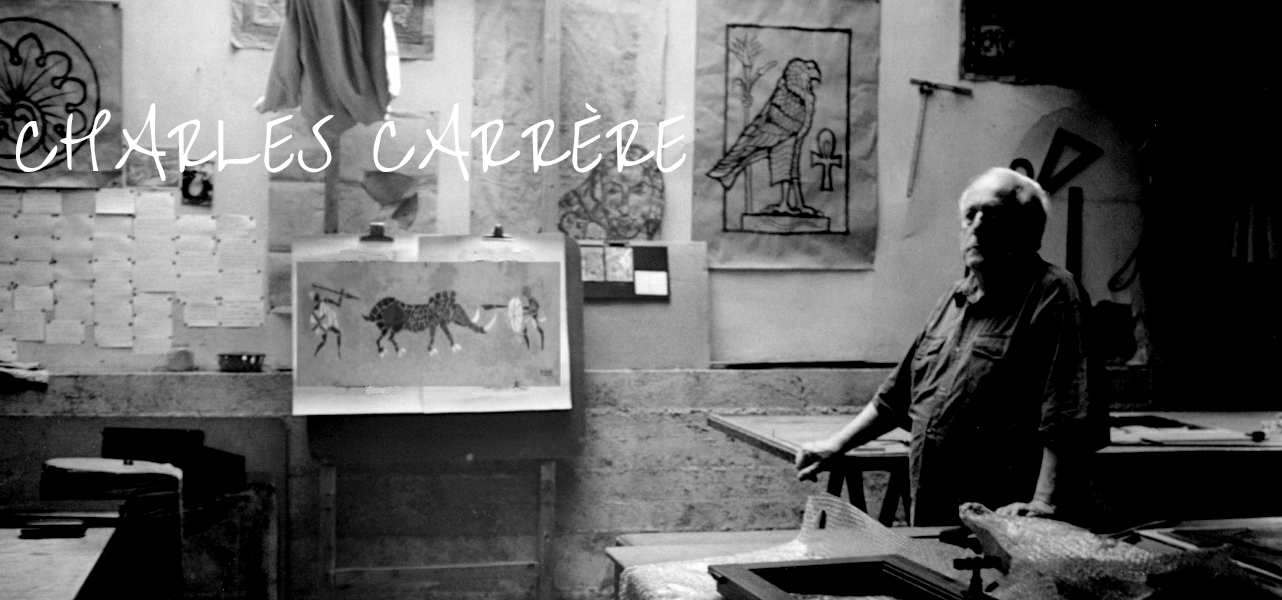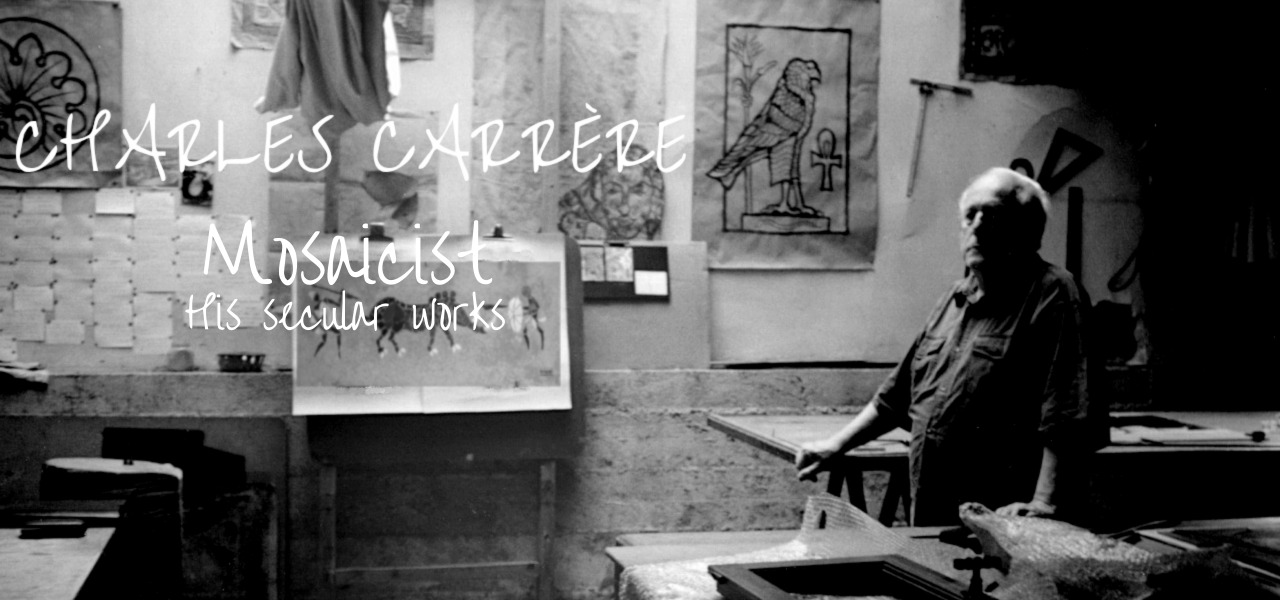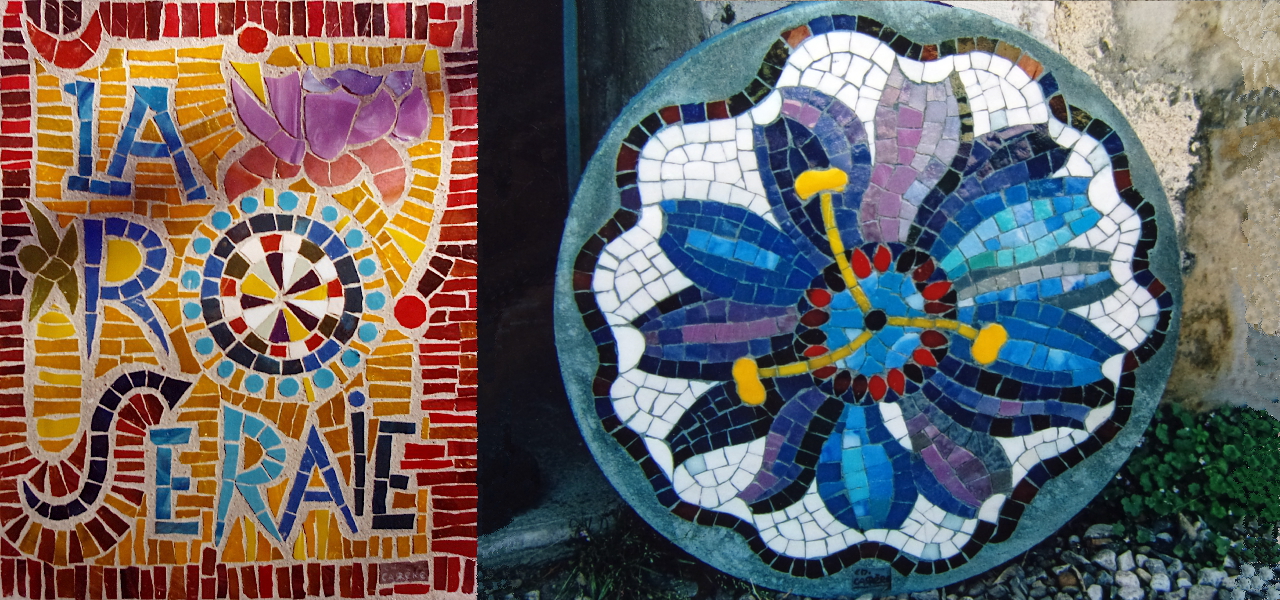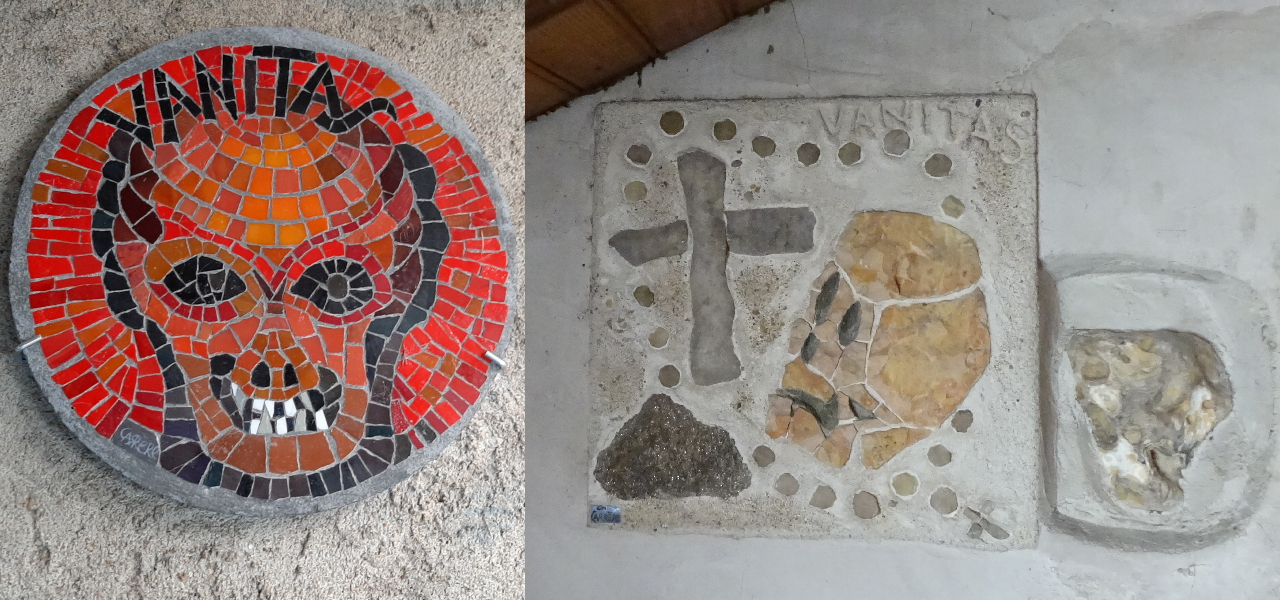The secular works of mosaic artist Charles Carrère is rather discreet. The orders generally come from acquaintances who have built a house and wish to put his name on the façade. Often the mosaic is integrated into the plaster of the wall.
In other cases the mosaic is a decorative element for the wall, as here on the façade of a building. It is held in place by hooks. It is said to be stapled.
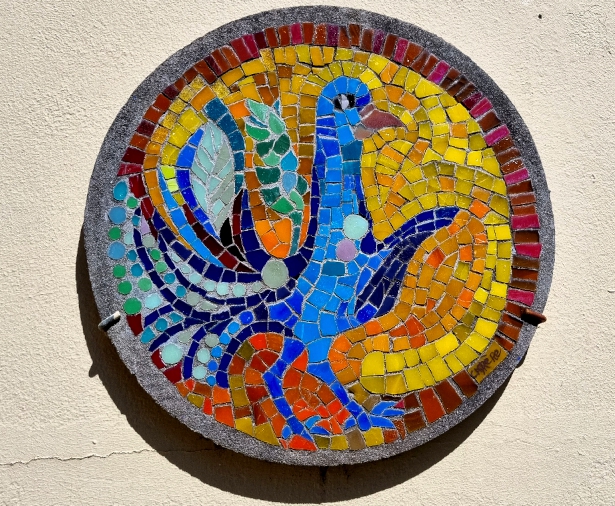
Inside houses, mosaics decorate the fireplace or the kitchen. But there are also some works that are displayed on the wall as decoration. Like the work below, whose title is a word-value: Safarhinoceros.
Charles Carrère likes to apply these mental gymnastics to some of his works. In the 16th century, Rabelais was already creating “mots valises” such as “hypocritique”. Later, Madame de Sévigné proposed “bavardiner”, to cite just a few examples. And throughout his life Charles Carrère regularly used these catchwords to define some of his works.
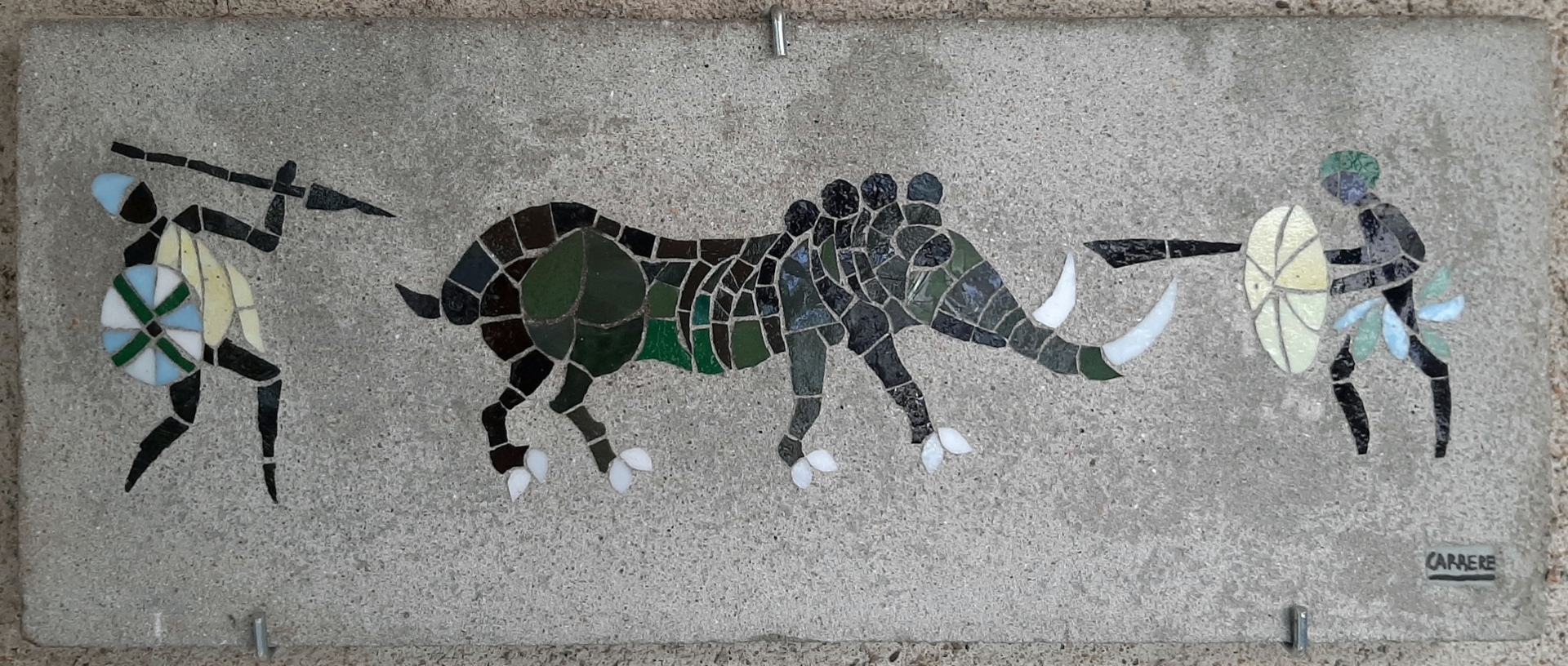

A little anecdote about this mosaic work: One day, Charles Carrère’s nephew placed an order with his uncle. He asked him for a mosaic representing a bird or a tree. Some time later, Charles Carrère appeared in front of his nephew and said with a small, restrained smile: “Here’s your bird”! His nephew was astonished but immediately noticed that this car was inspired by the Peugeot 201 that Charles Carrère’s brother had bought in the 1950s.
Then he remembered this photograph where Charles Carrère is posing very seriously next to the Peugeot 201 with the bell of a phonograph sticking out of the open door. And Charles Carrère poses under the eye of the lens to immortalise this humorous feature: look, there’s even music in the car!

Photo©CharlesCarrère
Discovering his religious works
Or return to the mosaicist’s main page
Or return to the home page
This post is also available in: French

